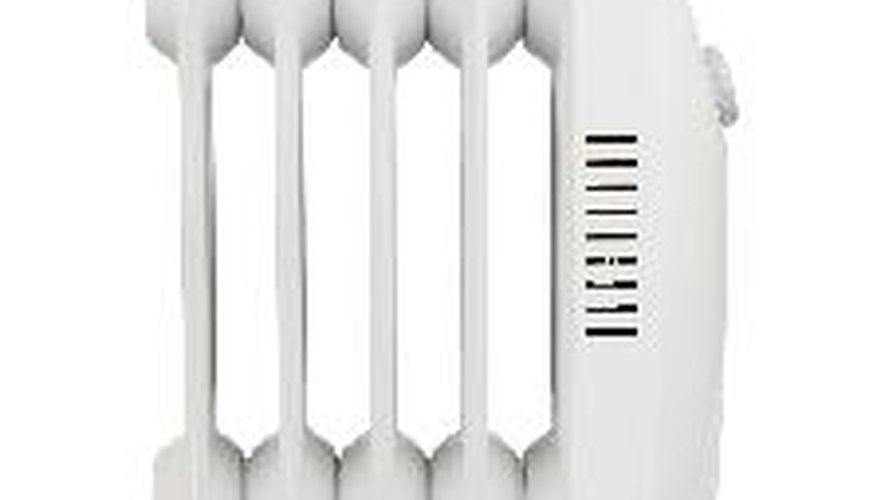Oil-filled heaters, also called oil-filled radiators, are electrical convection heaters. They use a heating element to convert electricity into heat. They contain columns of oil that warm up slowly and dissipate the stored heat into a limited space over time. Oil-filled heaters are popularly used to heat small spaces. They are large and portable and emit heat slowly over time, so they are viewed as efficient and convenient. They do contain hot oils however, so they pose a potential fire hazard. They are also slow and heavy and can be expensive to run.
Slow
Oil-filled heaters tend to take longer to heat up than other electrical convection heaters. The oil has a high specific heat capacity, which means it takes a lot of heat to raise the temperature by 1 degree Celsius. You will have to allow for enough time for the heater to warm up before the space reaches a comfortable temperature. Some are equipped with a timer that you can use to preheat the room prior to use. If the heater is equipped with a thermostat, it can be set to switch off when the oil reaches the desired temperature. The heater slowly releases the heat from the oil into the room over time.
- Oil-filled heaters tend to take longer to heat up than other electrical convection heaters.
- If the heater is equipped with a thermostat, it can be set to switch off when the oil reaches the desired temperature.
Big and heavy
Oil-filled heaters contain large columns that are filled with oil. This means that they are usually much bigger than other electric heaters and take up a larger amount of floor space. The oil makes the heater quite heavy and difficult to lift or move around from place to place. Oil-filled heaters are popular for their capacity to heat small spaces and often need to be moved around to heat the space that a person is occupying at the time. They are equipped with casters or wheels so they can be pushed around and to make them more easily portable.
- Oil-filled heaters contain large columns that are filled with oil.
- Oil-filled heaters are popular for their capacity to heat small spaces and often need to be moved around to heat the space that a person is occupying at the time.
Fire hazard
Oil-filled heaters need large amounts of electrical energy to generate sufficient amounts of heat. You need to ensure that you plug the heater into an outlet which supplies a sufficiently high voltage to power the heater. Incorrect voltages can cause the wires to overheat and start an electrical fire. The heater contains oil, which is extremely flammable, so you will need to take special precautions when using these types of heaters. Take care to use heavy extension cords if you need to use one. You will need to keep the heater at a safe distance from bedding and away from flammable household chemicals.
- Oil-filled heaters need large amounts of electrical energy to generate sufficient amounts of heat.
- You need to ensure that you plug the heater into an outlet which supplies a sufficiently high voltage to power the heater.
Expense
The energy requirements of oil-filled radiators can be quite high. This makes them more expensive to run than comparable methods of heating, such as gas. They require a good deal of electricity to produce the energy required to heat the oil. This could have a significant impact on your electricity bill, especially if you use an oil-filled heater to heat a large room.
- The energy requirements of oil-filled radiators can be quite high.
- This could have a significant impact on your electricity bill, especially if you use an oil-filled heater to heat a large room.
